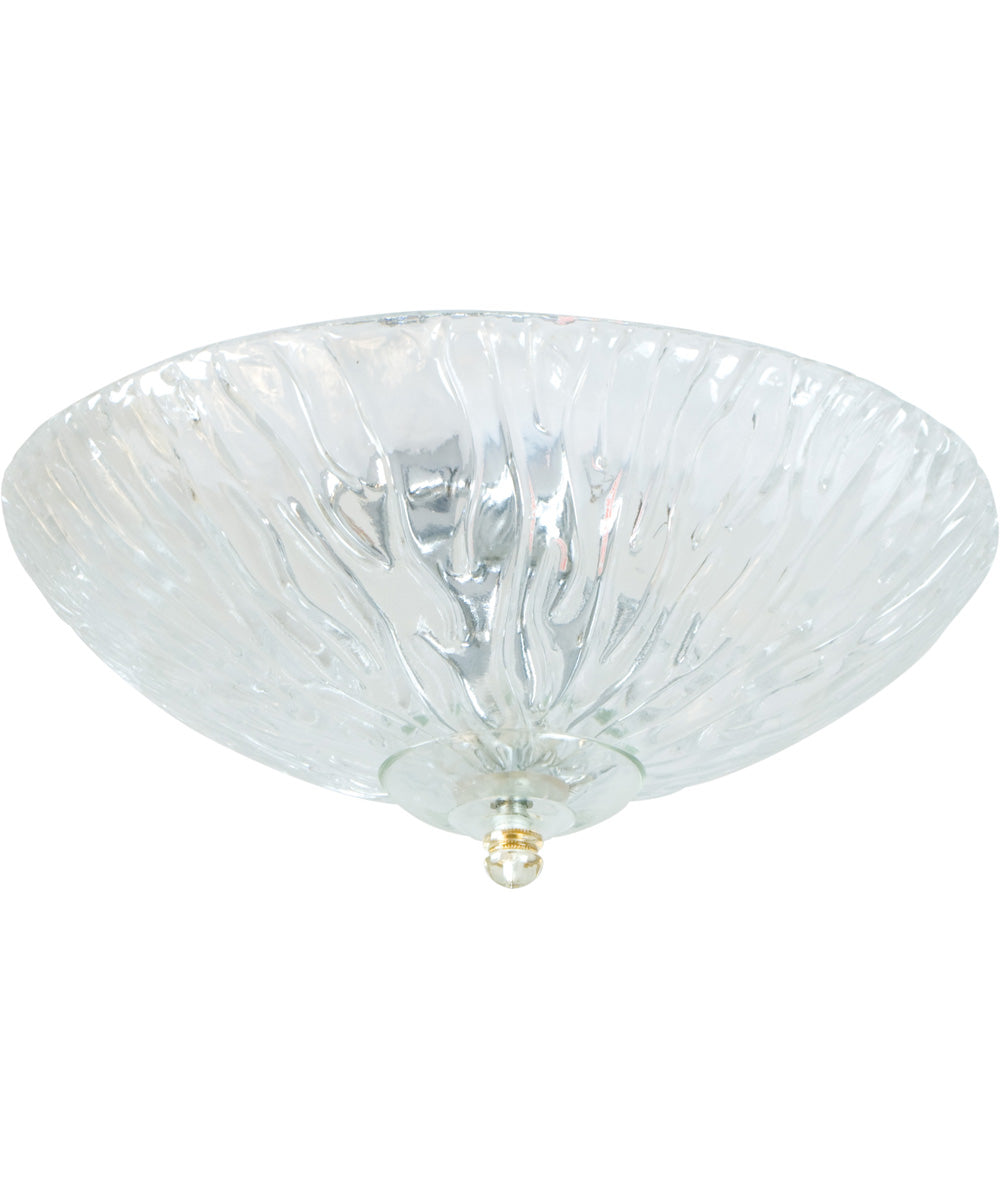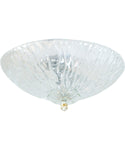Craftmade Elegance Bowl Light Kit 2-Light LED Fan Light Kit

Elegance Bowl Light Kit 2-Light LED Fan Light Kit
Craftmade presents the Elegance Bowl Light Kit Elegance Bowl Light Kit with Clear Glass. Finished in, this item is available now to inspire your home or office.- Finish
- Clear Glass
- Shade shape: Bowl
- Made with Glass and
- " Height x
- 2 x 9 Watt E26-base LED A19 Soft White bulbs (included)
- x Watt -base bulbs (included)
- 780 Lumens, 3000 Color Temperature, 80 CRI
- 2 x 9 Watt LED Bulbs included
- Blade finishes: /2 x 9 Watt LED Bulbs included
- Includes Downrod(s) at inch Length
- Part of the Elegance Bowl Light Kit Collection by Craftmade
- n/a
- cULus Listed
- Weight: 3.74782 lbs

What is an Ceiling Fan?
 A ceiling fan is a fairly large ceiling-mounted fan which can rotate clockwise or anticlockwise. In one direction the fan blows air downward, while in the other it draws air upwards. Some fans come equipped with a light fixture to double as a central light. The fan is a hardwired fixtures so has to be installed electrically. Typically it is used with a wall switch or remote control. Ceiling fans can help keep you cool in summer and also warmer in winter by circulating the air.
A ceiling fan is a fairly large ceiling-mounted fan which can rotate clockwise or anticlockwise. In one direction the fan blows air downward, while in the other it draws air upwards. Some fans come equipped with a light fixture to double as a central light. The fan is a hardwired fixtures so has to be installed electrically. Typically it is used with a wall switch or remote control. Ceiling fans can help keep you cool in summer and also warmer in winter by circulating the air.
Ceiling Fan Benefits
- Circulates air for healthier breathing.
- Reversible direction for summer/winter.
- Blows air onto bodies for direct cooling.
- Draws hot air upwards for ambient cooling.
- Optional speeds for varying effect.
- May add to lighting (if light is included or addedd).
- Saves on electrical heating bills.
- Keeps rooms fresher and helps remove odors.
- Provides a gentle breeze over a bed or chair.
- Usually can be manually (pull chain) or wall (switch) operated.
- Helps to remove or distribute hot rising air.
LED Technology
This item features an LED light bulb. An LED (light emitting diode) bulb includes multiple small electronic diodes which each emit bright light. Each LED light uses very little wattage compared to other types of bulbs. They last far longer, typically more than 20-30,000 hours (several years), while saving significantly on electrical bills. The light output is typically bright white. LED bulbs also produce far less heat than other bulbs. Choose LED lighting for the most modern lighting technology.
Crystal/Gla Style
Our Crystal or ‘Glam’ Lighting Style is full of bling, and includes the most head-turning clear glass designs to express your inner diva. Lavished in crystal ornamentation or rich in precious metallic and chrome overlays, each dazzling lighting design speaks opulence and splendor. And like a true-to-life Cinderella story, our Crystal-Glam Lighting can turn your home into the palace it was meant to be.
For which rooms?
A ceiling fan needs enough headroom, so is ideal over some furniture such as a couch, seating area or bed. See hugger fans for maximizing headroom. Fans are most often used in living rooms, family rooms and bedrooms, where people might be dwelling for a longer period of time.
Placement/Layering
A fan is best positioned either centrally in the room or above a main seating or sleeping area. If the fan has a light it can help to light the room. We recommend adding either wall lights or some lamps to fill out the space.
Mounts to the Ceiling
Attaches to a ceiling. The ceiling should be flat, unless the fan supports sloped/vaulted ceilings. A small canopy will conceal the electrical installation.
Installed by an Electrician
An electrician or person with electrical installation knowledge will need to permanently wire the ceiling fan into the building's electrical supply.
Additional Information
LED Lighting is the future!
LED feature cutting-edge LED lights. The benefits of LED lighting are astounding. They last far longer than any other type of bulb - usually longer than the lifetime of the item itself. The energy they require in order to produce bright light is far lower than incandescent bulbs or fluorescent bulbs, providing you a significant savings on your electrical bill. Compared to other non-LED , and especially compared to incandescent fixtures, LED easily pay for themselves over their lifetime.You'll never have to buy replacement bulbs because LED bulbs can last for 30-50,000 hours ... at least 15-20 years with 5 hours per day of use. Imagine the cost savings not having to buy 10 sets of replacement bulbs in that time, plus saving trips to the store and dealing with the inconvenience of old-fashioned lighting!
LED bulbs require much less electrical energy - only a few watts per bulb. Your electrical bill will be lower as a result. If you're put off by LED because of the price, consider it a long-term payoff - overall you will save by joining the LED revolution today!
We've shopped for you!
You're getting the the lowest prices, guaranteed!
Thousands of items are on sale every day. Plus you're tax-free unless you live in Wisconsin.
Want a different price? Contact us for a personalized quote.
Safely checkout with our world-class encryption.
Trusted by over 100,000 customers, your private and payment data is secure and will not be shared.
We accept Visa, Mastercard, Discover and Paypal. Credit cards can also be processed through Paypal.
Spend $49.00 to get Free Shipping (contiguous USA).
Most other items ship for $9 in 1-3 business days (contiguous USA). QuickShip items ship out the next business day.
Depending on your location, shipments take on average 3-5 business days or up to 7-10 from coast to coast. We ship from multiple locations.
You will receive tracking numbers by email when your items ship out, via Fedex, UPS or USPS.
You'll be able to track the packages online or on our site.
You can also talk to our team of experts at any time, or Live Chat.
Enjoy 30 days for easy returns. See our return policy for details.
We replace breakages/damages/missing parts etc for free.
Every item is covered under our extended 1-year warranty.


